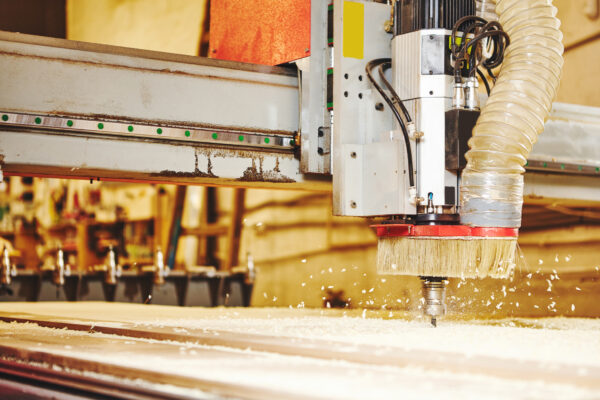From advanced manufacturing applications, aging infrastructures, and new technologies, equipment risks are changing, but breakdowns remain inevitable. When you think of the different types of equipment you use in your daily operations, from boiler systems, electrical systems, machinery and manufacturing equipment, and computers, any one breakdown to a system can bring your business to a halt leading to long lead times for costly repairs and even lost profits.
One way a business can protect itself from unexpected breakdowns is through equipment breakdown insurance, also known as boiler and machinery insurance. It helps to cover the cost of repairing and replacing equipment that suddenly is damaged or unexpectedly stops working altogether. It also helps cover things like lost income due to the breakdown and necessary expenses incurred during the restoration period.
In addition to coverage, preventative maintenance is key. Regular and routine maintenance of equipment and assets helps keep them running and prevent any costly unplanned downtime from unexpected equipment failure. A successful maintenance strategy requires planning and scheduling maintenance of equipment before a problem occurs.
CNC Machines
For businesses that use Computer Numerical Control (CNC) machines, equipment failures can lead to damage and costly business disruptions. Regularly inspecting and maintaining this equipment is essential for long-term machine safety, accuracy, and reliability.
CNC machines normally operate in a semi-autonomous fashion, sometimes continuously, which may cause scheduled maintenance to be overlooked or recommended maintenance frequencies to be greatly exceeded. Having a qualified operator who is familiar with the proper operation of the equipment goes hand-in-hand with an effective maintenance program. A well-trained operator is the primary safeguard for ensuring that the equipment is functioning normally. However, even with a skilled, qualified operator, a preventive and predictive maintenance program is essential.
Preventive and Predictive Maintenance Guidelines
The following guidelines are provided as an aid for developing a maintenance program specific to your operations. There are many factors, such as variations in equipment type, use, and location, that should be considered. It is best practices to consult with the original manufacturer for further guidelines. Only qualified operators or technicians should complete the maintenance program elements listed below.
- Maintenance records: Keep a detailed history of all maintenance performed and repairs made. Review these records regularly to ensure inspections and needed maintenance are performed at recommended intervals.
- Visual inspections: Includes external and internal examinations, looking for visual and audible clues that may indicate an abnormal condition. It is recommended that a daily checklist be developed and used to establish consistent visual inspections for each machine type.
- Lubrication and fluid systems checks: Verify adequate fluid levels, lubrication and timely replacement or treatment.
- Electrical system checks: The following should be checked in accordance with manufacturer guidelines.
- Safety and Limit Controls – Periodic maintenance, inspection, and testing of protection devices can help increase equipment reliability. Safety devices should be tested at least annually or as recommended by the manufacturer. The safety and limit controls vary by equipment and manufacturer and may include guard or protective cover proving switches, end of travel/overtravel limits, spindle overload, fluid level and/or pressure sensors, temperature monitoring, etc.
- Transient Voltage Protection – It is a best practice to incorporate transient voltage protection if it is not already incorporated in each system.
- Thermographic Inspections and Amp Draw Testing – Can be useful in identifying electrical system problems and may help prevent equipment breakdowns.
- Calibration: Periodically inspect and calibrate components such as the spindle, servos, backlash, tool changer alignment/indexing, etc., according to manufacturer recommendations to identify wear and misalignment before they result in unplanned downtime.
- Pneumatics: Maintain a clean and dry air supply, within the pressure range recommended by the manufacturer, to help ensure proper pneumatic system operation and reliability.
- Accessories and Spares: Accessories and spare components should be maintained to help ensure these components are functional in the event that they are needed.
Whether the risks are known or unknown, breakdowns will happen. Keeping up with preventative maintenance of your equipment and systems and finding the right coverage can help protect your business when a breakdown occurs.
Lumber Memo: Issue 4 – 2023
IN THIS ISSUE:
- President’s Commentary
- Cyber Corner: Company Size Doesn’t Matter
- Navigating a Hard Market
- You Need a Cyberattack Response Plan. Here’s Why.
- Plumb Safety: Equipment Breakdown – CNC Machines
- The Dovetail: The Insurance Promise
- Spotlight On: Lindsey DiGangi and Kelly Sullivan Named Lumber Industry Award
- Spotlight On: PLM Wins Two Major Workplace Honors
- Spotlight On: Matthew Kienholz Appointed to AVP – Regulatory & Government Affairs
- Spotlight On: Upcoming Events List


